- With student learning as its primary focus, Evergreen Valley College’s mission is to empower students to expand their human potential and to succeed in a global, multicultural society. The College provides access to comprehensive and flexible post-secondary education to prepare students of all ages and backgrounds for balanced and productive lives and to improve the workforce and quality of life in our community.
School Highlights
Evergreen Valley College serves 13,177 students (17% of students are full-time).
The college's student:teacher ratio of 38:1 is higher than the state community college average of 32:1.
Minority enrollment is 91% of the student body (majority Hispanic and Asian), which is more than the state average of 77%.
Quick Stats (2025)
- Enrollment: 13,177 students
- In-state tuition: $1,326
- Out-state tuition: $7,010
- Student:teacher ratio: 38:1
- Minority enrollment: 91%
- Source: Integrated Postsecondary Education Data System (IPEDS)
School Overview
The teacher population of 345 teachers has stayed relatively flat over five years.
Evergreen Valley College
(CA) Community College Avg.
Carnegie Classification
Associate's Colleges: High Transfer-Mixed Traditional/Nontraditional
Baccalaureate/Associate's Colleges: Associate's Dominant
Institution Level
At least 2 but less than 4 years
At least 2 but less than 4 years
Institution Control
Public
Public
Total Faculty
345 staff
294 staff
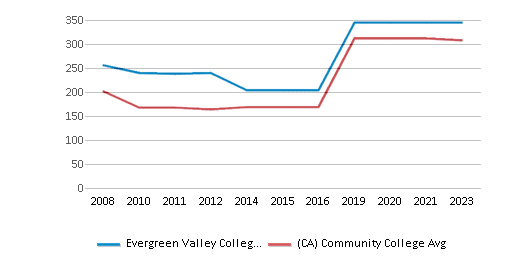
School Calendar
Student Body
The student population of Evergreen Valley College has grown by 34% over five years.
The student:teacher ratio of 38:1 has increased from 25:1 over five years.
The Evergreen Valley College diversity score of 0.65 is less than the state average of 0.70. The school's diversity has stayed relatively flat over five years.
Total Enrollment
13,177 students
2,311 students
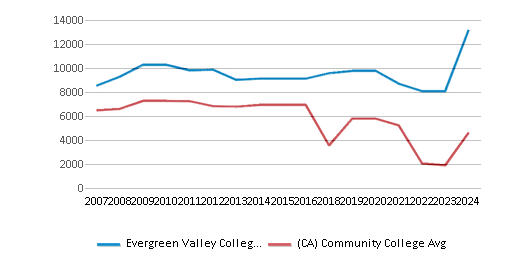
Student : Teacher Ratio
38:1
32:1
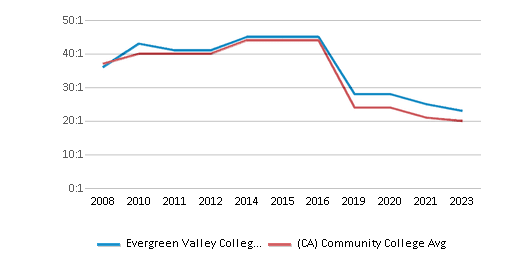
# Full-Time Students
2,254 students
1,232 students
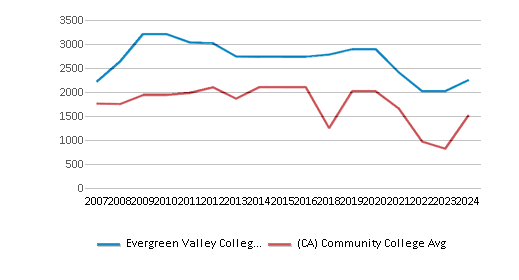
# Part-Time Students
10,923 students
8,299 students
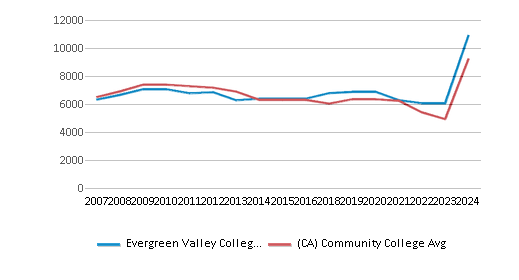
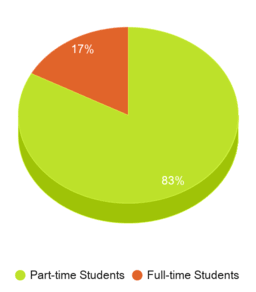
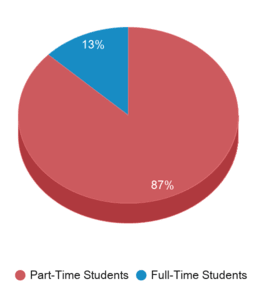
# Enrollment Undergraduate
131 students
240 students
# Full-Time Undergraduate Students
2,254 students
1,155 students
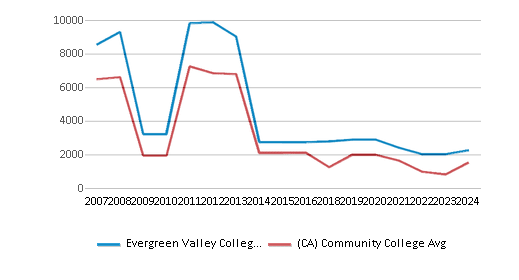
# Full-Time Graduate Students
n/a
63 students
# Part-Time Undergraduate Students
10,923 students
8,457 students
# Part-Time Graduate Students
n/a
10 students
Total Dormitory Capacity
n/a
140 students
% American Indian/Alaskan
n/a
n/a
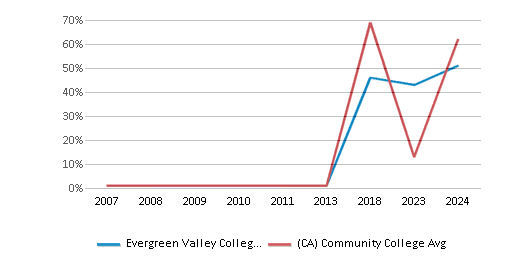
% Asian
41%
13%
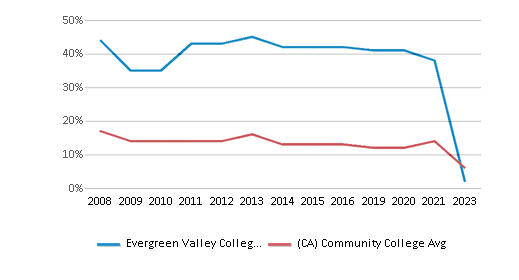
% Hispanic
41%
47%
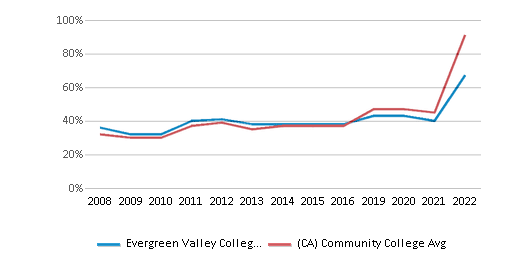
% Black
3%
7%
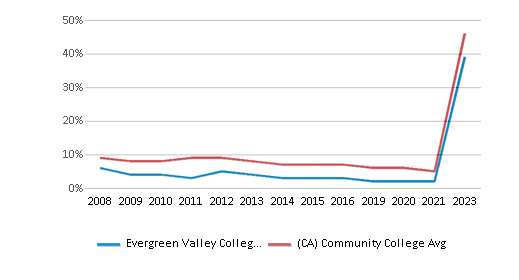
% White
9%
23%
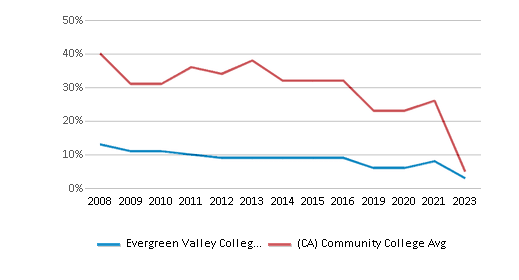
% Hawaiian
n/a
1%
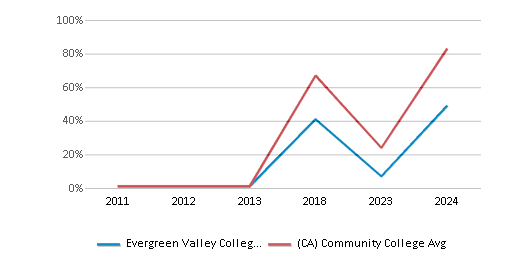
% Two or more races
3%
5%
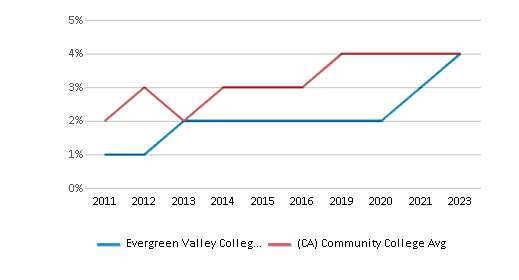
% Non Resident races
1%
1%
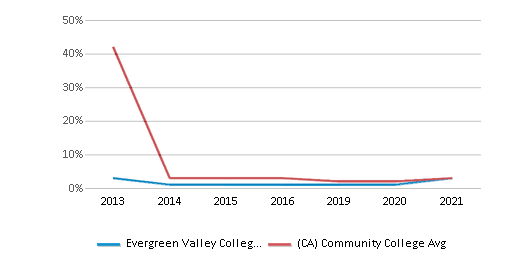
% Unknown races
2%
3%

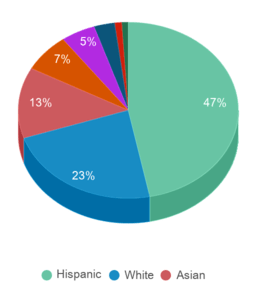
Diversity Score
0.65
0.70
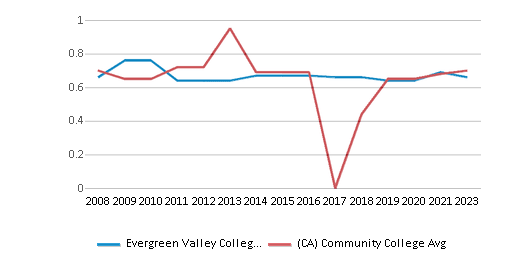
College Completion Rate (Students who graduate in less than 4 years)
0.3503%
0.4221%
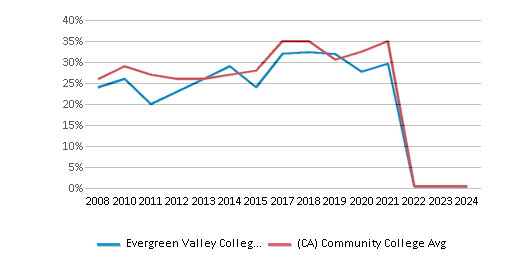
College Completion Rate (Students who graduate in 4 years or more than 4 years)
n/a
0.4304%
Average Graduate Earnings (10 Years)
$40,000
$34,700
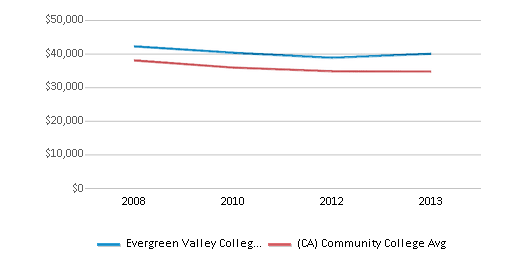
Tuition and Acceptance Rate
The public in-state tuition of $1,326 is more than the state average of $1,236. The in-state tuition has stayed relatively flat over four years.
The public out-state tuition of $7,010 is more than the state average of $6,547. The out-state tuition has declined by 26% over four years.
In-State Tuition Fees
$1,326
$1,236
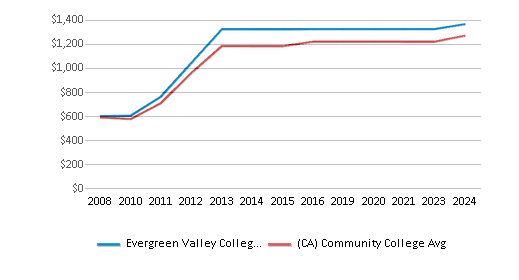
Out-State Tuition Fees
$7,010
$6,547
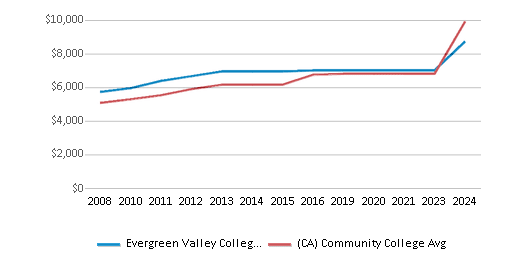
% Students Receiving Some Financial Aid
76%
85%
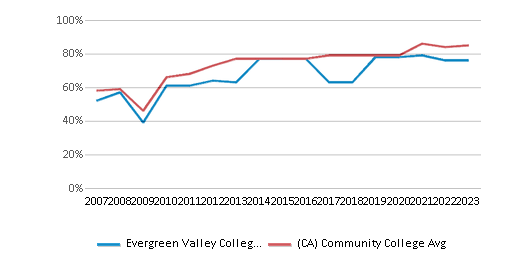
Median Debt for Graduates
$11,937
$10,500
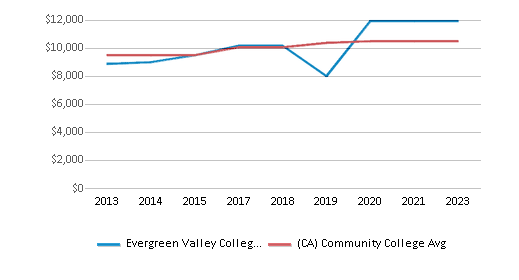
Median Debt for Dropouts
$7,300
$6,239

Acceptance Rate
n/a
92%
Source: 2024 (or latest year available) Integrated Postsecondary Education Data System (IPEDS)
School Notes
- Evergreen Valley College (EVC) is an established energetic institution located on a picturesque 175 acre site in the eastern foothills of San Jose. Planning for the college began on July 1, 1964, when the San Jose/ Evergreen Community College District officially became an independent college district. By November 16, the Board of Trustees had approved an outline for a comprehensive study to develop a master plan for the District. Citizens' advisory committees were formed to assess the educational needs of the District. The Learning Resource Center, which opened in Fall 1979, houses the Library, Media Services, Counseling Services, Transfer/Career Center, Disabled Student Services, Testing Center, Student Health Services, Financial Aid and Apple Computer Laboratory. In addition, the Learning Resource Center includes Montgomery Hall, a 250 seat multipurpose facility available for instruction and Community Service activities. Like other California public community colleges, Evergreen Valley College is a tax-supported college and has comprehensive curricular offerings through day, evening, and weekend classes. Evergreen Valley College joins San Jose City College in serving residents of the 303 square mile San Jose/ Evergreen Community College District. The District includes the areas served by Milpitas and San Jose Unified School Districts, together with the Eastside Union High School District. Residents who are high school graduates, or at least 18 years of age, may attend either college, as there are no attendance boundaries within the District.
Frequently Asked Questions
How much does Evergreen Valley College cost?
Evergreen Valley College's tuition is approximately $1,326 for In-State students and $7,010 for Out-State students.
In what neighborhood is Evergreen Valley College located?
Evergreen Valley College is located in the Evergreen neighborhood of San Jose, CA.
Recent Articles

Obtaining Your Bachelor's Degree at a Community College
Explore the evolving landscape of community colleges offering bachelor's degrees, addressing affordability, accessibility, and workforce needs.

A to Z of Community College Certificates and Courses
From business and healthcare to technology and skilled trades, the article showcases the breadth of options available to students seeking to enhance their knowledge, develop new skills, or pursue career advancement.

What is a Community College?
This comprehensive guide explains what a community college is, its history, and its role in higher education. It covers the types of programs offered, differences from four-year colleges, benefits of attending, and important considerations for prospective students, providing valuable insights for those exploring educational options.









